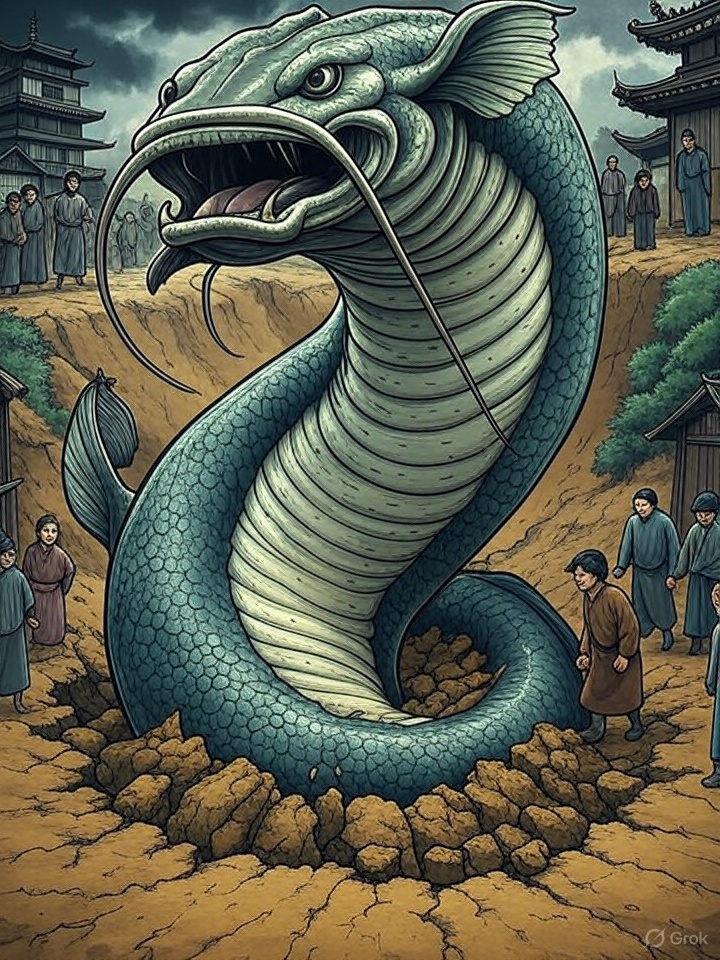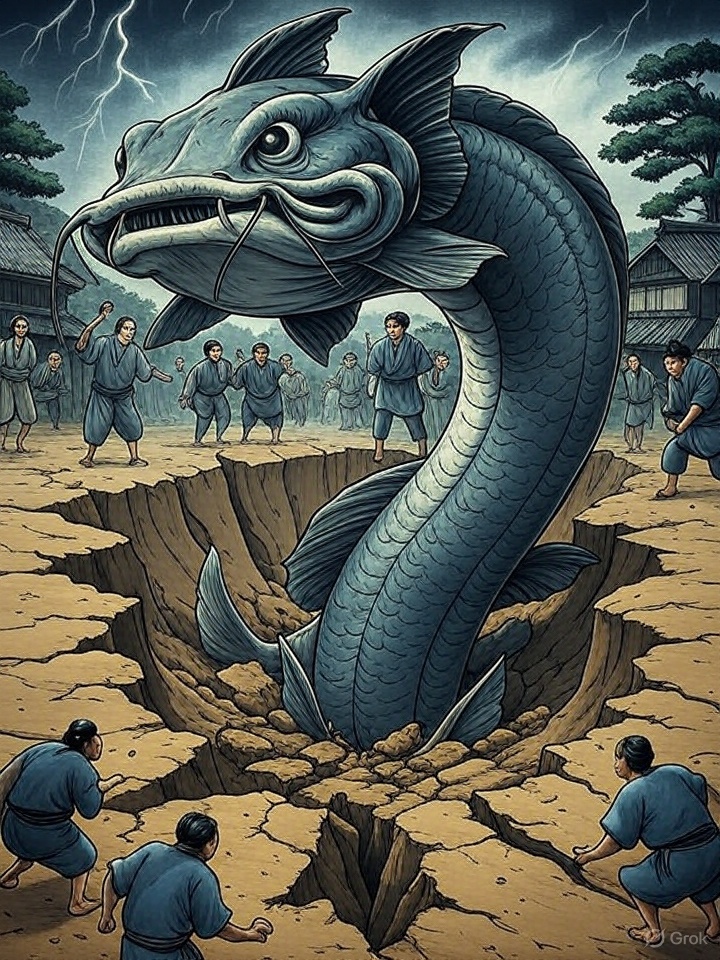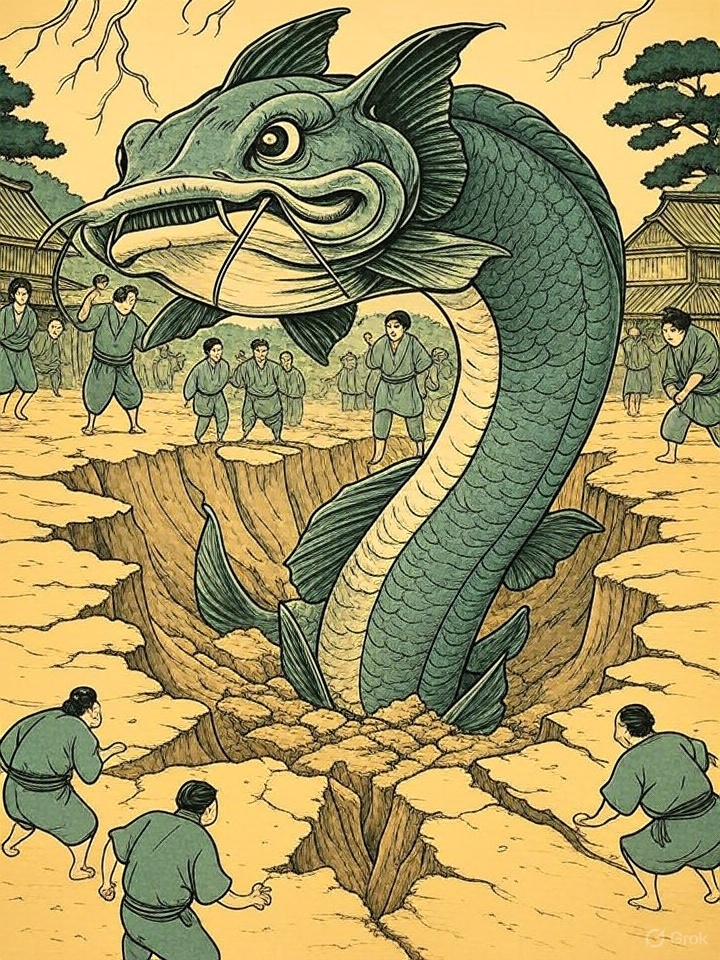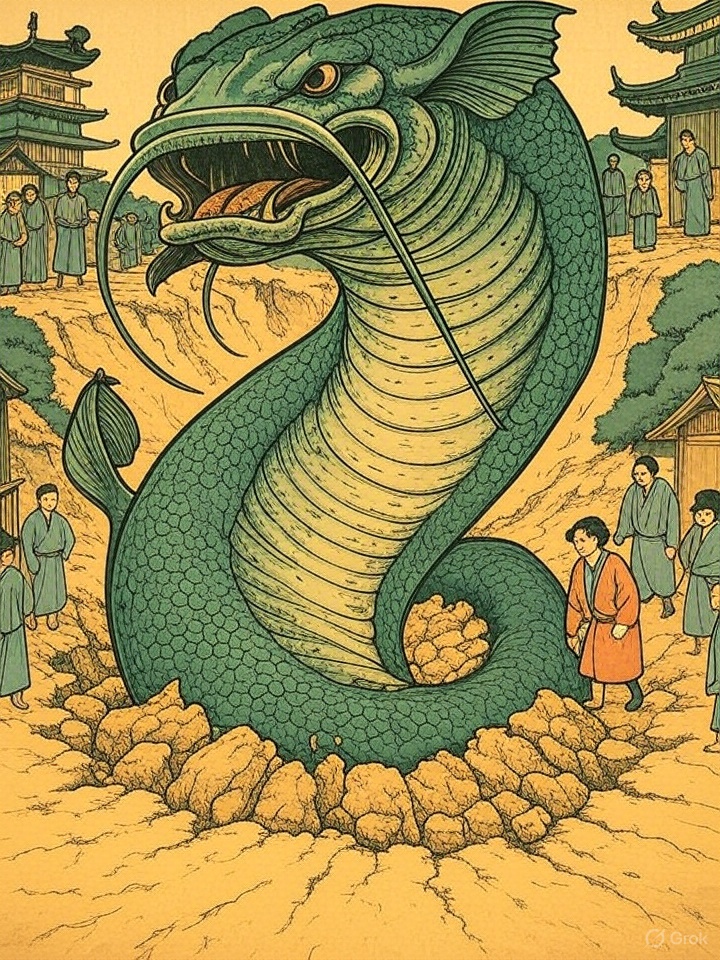Name Meaning
Overview
\n
Jishin-namazu (地震鯰) combines "jishin" (earthquake) and "namazu" (catfish), reflecting the belief that this creature causes seismic tremors.
- Jishin (地震) = earthquake
- Namazu (鯰) = catfish
Origin
- One of the most iconic disaster-related yokai in Japanese mythology.
- Gained prominence during the Edo period and the 1855 Ansei Edo earthquake.
- Associated with Namazu-e woodblock prints used to convey social or political messages.
Appearance
- A colossal black or brown catfish with trembling whiskers.
- Sometimes bound or guarded by a deity, such as Kashima.
- Its stirring beneath the land is believed to shift tectonic plates.
Behavior & Myths
- When it thrashes its tail underground, earthquakes follow.
- Said to live under the islands of Japan.
- Occasionally restrained by the god Kashima with a magical stone or sword.
Symbolism
- Represents nature’s wrath and the unpredictability of earthquakes.
- Used in art to express human vulnerability and divine punishment or balance.
- Reflects Japan’s deep cultural engagement with natural disasters.



